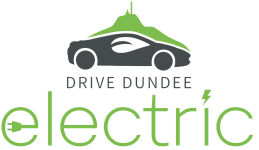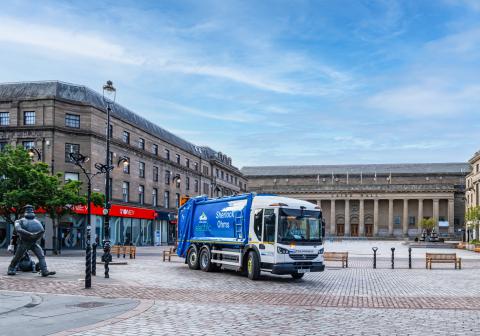Dundee City Council have welcomed six RCVs into their fleet of council vehicles in an effort to bring down emission levels within the city.

Dundee City Council - Drive Dundee Electric
Go To WebsiteAddressed Challenges:
- Air pollution
- Tech & innovation
- Carbon emissions
Action Areas:
- Transport
Initiative Purpose:
- Adaptation & Mitigation
The Story

Dundee City Council have been working hard to introduce EVs into its fleet and into the city. The swap to EVs has seen the council travel over 5.6 million miles on pure electric already.
Since the launch of 100% electric vehicles into its Fleet in 2011, Dundee City Council has become a pioneering force in the uptake of EV infrastructure within local government. From the introduction of the first four cars and chargers 11 years ago, Dundee is now home to one of the highest concentrations of electric vehicles of any city in the UK. This also extends to the Dundee City Council Fleet which now has over 175 EVs, one of the largest of any local authority in the UK.
2021 began with the introduction of two fully electric RCVs, marking the beginning of a long-term plan to convert all Dundee City Council fleet vehicles to full electric by 2035. Fast forward to June, an additional 4 electric RCV's were introduced into the fleet.
In an effort to involve the public in this change and spread awareness of is benefits, school children were challenged with naming the vehicles. The fleet of RCVs now include Leonardo Di Charge-io, Bin Diesel, Dr Watts, Victoria Volt, Sherlock Holmes and Albert Amp.
Success & Outcomes
The environmental impact of these vehicles is clear, with 20,000kg of carbon dioxide being saved per vehicle. Once all 36 lorries in the fleet are electric, this will equate to 720,000kg of CO2 saved from being released into the atmosphere.
The current six vehicles are now a vital part of the council's operations, being used on a daily basis to collect waste throughout the city. It was important to the council that a vehicle which is so readily used and provides a vital service was at the forefront of the transition to electric.
Advice for others looking to do something similar
The cutting-edge battery technology within each RCV required new technology training for council mechanics and continues to pose challenges when things go wrong or need repaired. However, this is also an opportunity to upskill staff members and familiarise them with the technology of the future.
We have also now installed solar canopies on the top of the salt dome, located at Marchbanks Depot. The energy generated from these will be used to directly charge the RCVs. This will ensure the energy generated is coming from a renewable source, which is vital to the transition to a cleaner transport sector within the city.
